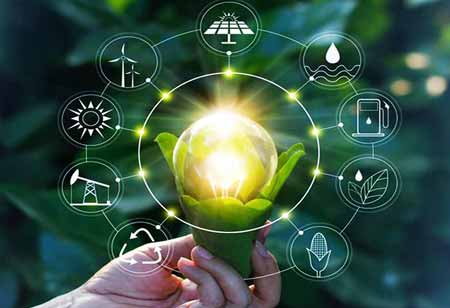Thank you for Subscribing to Energy Business Review Weekly Brief
Green Hydrogen Imports, Real-time Energy Contributors
The European Union (EU) has likely set a significant hydrogen deployment target for the world, eliminating its reliance on fossil fuels obtained from conflicting nations.

By
Energy Business Review | Friday, January 06, 2023
Stay ahead of the industry with exclusive feature stories on the top companies, expert insights and the latest news delivered straight to your inbox. Subscribe today.
With green hydrogen emerging as the future energy source in the upcoming years, maximising its productivity is crucial, where importing the energy from varied nations is an effective alternative.
FREMONT, CA:The European Union (EU) has likely set a significant hydrogen deployment target for the world, eliminating its reliance on fossil fuels obtained from conflicting nations. That is, nearly 20 million metric tonnes of renewable-produced hydrogen are expected to be used as a fuel and feedstock in the future, increasing demand for its sources relatively. Whereas, the region is frequently hampered by various impediments that must be effectively addressed in order to retain investments in new hydrogen facilities.
However, the market growth of hydrogen in the EU space often fluctuates with the attainment of global support for accelerating green hydrogen production, especially with the renewable electricity power and electrolysers that produce hydrogen and oxygen from water. Additionally, the necessity of an energy transition within Europe has instigated an effective leveraging of locally produced and imported hydrogen. This, in turn, maintains the operational pace of industrial sites, along with the critical replacement of gas, coal, and oil in energy-intensive sectors.
Wherein, importing hydrogen opens up seamless opportunities like security and diversity of supply, thereby bolstering the energy security of the EU by combining domestic green hydrogen with imports. Europe has increased its ability to supplement a consistent internal supply with diverse provisions from various sectors that are traditionally aligned with EU interests. Likewise, procuring secure fuel sources for EU industries is highly critical, following the retrenchment of operations by manufacturers in the face of elevated fossil fuel prices.
As a result of large-scale green hydrogen (H2) import techniques, European fertilisers and chemical plants are expected to undergo a transition to a more H2-integrated composition from nations all over the world. Prioritising imports enables the EU to efficiently save the subsidies for domestic hydrogen production, yet with an increased power price in the sector. Moreover, an influx of imported green hydrogen facilitates the avoidance of investments in new gas import infrastructure.
Alongside this, balancing domestic production with imports enables the European Union to enjoy a magnificent sharing of cost-related burdens on account of investments in new hydrogen facilities, with technological development yet to be presumed. Likewise, several countries present globally with an ideal renewable profile are critically exporting low-cost green hydrogen to the EU, where the national subsidies for hydrogen production in these arenas may substantially impact the delivery costs of H2. Whereas, the EU holds itself accountable by relying on low-cost imports from various nations for efficient acoustic supply to energy-stressed industries.






